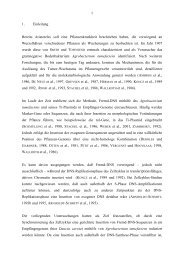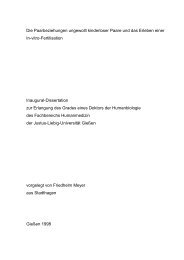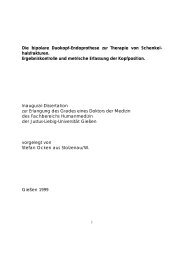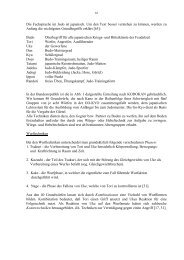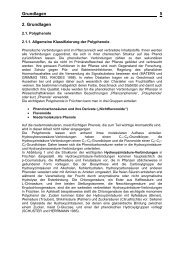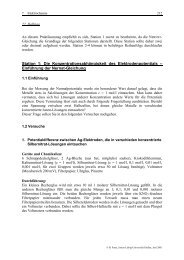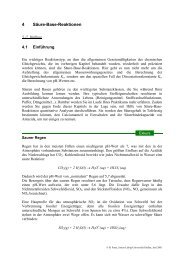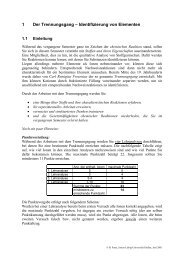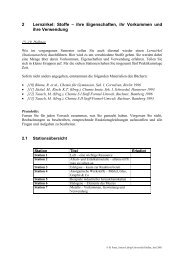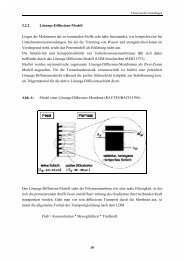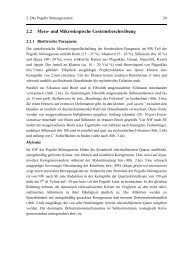Effects of diabaticity on fusion of heavy nuclei in the dinuclear model ...
Effects of diabaticity on fusion of heavy nuclei in the dinuclear model ...
Effects of diabaticity on fusion of heavy nuclei in the dinuclear model ...
Create successful ePaper yourself
Turn your PDF publications into a flip-book with our unique Google optimized e-Paper software.
<strong>the</strong> approximate expressi<strong>on</strong>s (Eqs. (5.36) and (5.37)), are nearly equal <strong>in</strong> both cases.<br />
Similar results as <strong>in</strong> <strong>the</strong> adiabatic two-center shell <strong>model</strong> are obta<strong>in</strong>ed. The mass parameters<br />
M λλ and M εε depend weakly <strong>on</strong> <strong>the</strong> mass asymmetry η and <strong>on</strong> <strong>the</strong> deformati<strong>on</strong>s β <str<strong>on</strong>g>of</str<strong>on</strong>g> <strong>the</strong> <strong>nuclei</strong><br />
(β = β1 = β2 for 110 Pd+ 110 Pd) at <strong>the</strong> touch<strong>in</strong>g c<strong>on</strong>figurati<strong>on</strong>. This result is presented <strong>in</strong><br />
Fig. 5-5. One can observe a m<strong>in</strong>imum <str<strong>on</strong>g>of</str<strong>on</strong>g> M λλ as a functi<strong>on</strong> <str<strong>on</strong>g>of</str<strong>on</strong>g> β <strong>in</strong> <strong>the</strong> reacti<strong>on</strong> 110 Pd+ 110 Pd<br />
around <strong>the</strong> ground state deformati<strong>on</strong> <str<strong>on</strong>g>of</str<strong>on</strong>g> 110 Pd (β ≈ 1.2). S<strong>in</strong>ce we regard <strong>the</strong> widths <str<strong>on</strong>g>of</str<strong>on</strong>g> s<strong>in</strong>gle-<br />
particles states, <strong>the</strong> mass parameters depend more smoothly <strong>on</strong> <strong>the</strong> mass asymmetry η than<br />
<strong>the</strong> mean field crank<strong>in</strong>g masses. In comparis<strong>on</strong> to Ref. [84], where <strong>the</strong> hydrodynamical-type<br />
treatment was used, <strong>the</strong> shell effects are here more transparent <strong>in</strong> <strong>the</strong> present c<strong>on</strong>siderati<strong>on</strong><br />
because all peculiarities <str<strong>on</strong>g>of</str<strong>on</strong>g> <strong>the</strong> s<strong>in</strong>gle particle spectra are taken <strong>in</strong>to account. Let us c<strong>on</strong>sider<br />
<strong>the</strong> fragmentati<strong>on</strong> 86 Kr + 134 Ba (η =0.2) <strong>in</strong> <strong>the</strong> system 220 U where <strong>the</strong> number <str<strong>on</strong>g>of</str<strong>on</strong>g> neutr<strong>on</strong>s<br />
<strong>in</strong> <strong>the</strong> fragments is close to <strong>the</strong> magic numbers 50 and 82, respectively, and <strong>the</strong> s<strong>in</strong>gle particle<br />
have a smaller slope with respect to λ than <strong>in</strong> <strong>the</strong> neighbour<strong>in</strong>g comb<strong>in</strong>ati<strong>on</strong>s. We f<strong>in</strong>d a<br />
levels<br />
c<strong>on</strong>tributi<strong>on</strong> to Mλλ from M smaller diag<br />
λλ and a local m<strong>in</strong>imum <strong>in</strong> <strong>the</strong> dependence <str<strong>on</strong>g>of</str<strong>on</strong>g> M λλ <strong>on</strong> η<br />
(Fig. 5-5). For η0.7.<br />
Therefore, we cannot calculate M εε at <strong>the</strong> moment for such large mass asymmetries, where a<br />
str<strong>on</strong>g <strong>in</strong>crease <str<strong>on</strong>g>of</str<strong>on</strong>g> M εε with η is expected <strong>in</strong> accordance with Ref. [84].<br />
The mass parameter M εε <strong>in</strong>creases about two times with decreas<strong>in</strong>g ε from 1.0 to0.5 or<br />
with <strong>in</strong>creas<strong>in</strong>g neck as shown <strong>in</strong> Fig. 5-6 and depends weakly <strong>on</strong> <strong>the</strong> mass number A. In<strong>the</strong><br />
reacti<strong>on</strong>s 110 Pd+ 110 Pd and 48 Ca+ 172 Hf, which lead to <strong>the</strong> same compound nucleus 220 U, <strong>the</strong><br />
difference between <strong>the</strong> corresp<strong>on</strong>d<strong>in</strong>g values <str<strong>on</strong>g>of</str<strong>on</strong>g> M εε becomes larger for small values <str<strong>on</strong>g>of</str<strong>on</strong>g> ε. Such a<br />
behaviour correlates with <strong>the</strong> fact that <strong>the</strong> diabatic c<strong>on</strong>tributi<strong>on</strong> to <strong>the</strong> potential energy grows<br />
faster with decreas<strong>in</strong>g ε <strong>in</strong> symmetric c<strong>on</strong>figurati<strong>on</strong>s than <strong>in</strong> asymmetric <strong>on</strong>es [35].<br />
For fixed ε =0.75, <strong>the</strong> mass M λλ grows with decreas<strong>in</strong>g el<strong>on</strong>gati<strong>on</strong> λ <strong>on</strong> average as shown<br />
<strong>in</strong> Fig. 5-6 and is 5 times larger than <strong>the</strong> reduced mass at λ ≈ 1.3. The dependence <str<strong>on</strong>g>of</str<strong>on</strong>g> M λλ<br />
<strong>on</strong> λ has fluctuati<strong>on</strong>s around an average upwards trend which are more pr<strong>on</strong>ounced with an<br />
<strong>in</strong>creas<strong>in</strong>g total mass number A <str<strong>on</strong>g>of</str<strong>on</strong>g> <strong>the</strong> system (Fig. 5-6) and at smaller temperatures (Fig. 5-7).<br />
The average trend is c<strong>on</strong>nected with an <strong>in</strong>crease <str<strong>on</strong>g>of</str<strong>on</strong>g> <strong>the</strong> average slope <str<strong>on</strong>g>of</str<strong>on</strong>g> <strong>the</strong> s<strong>in</strong>gle particle levels<br />
with decreas<strong>in</strong>g λ or ε and with <strong>the</strong> enlarged number <str<strong>on</strong>g>of</str<strong>on</strong>g> cross<strong>in</strong>gs between <strong>the</strong> diabatic levels.<br />
74



